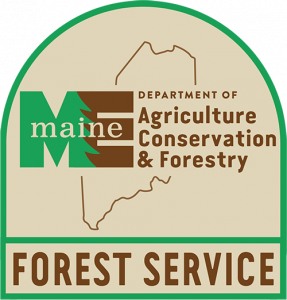Background
As growing spruce budworm populations continue to fluctuate in Maine, the Maine Forest Service, University of Maine Cooperative Forestry Research Unit (CFRU), and our cooperator network are tracking populations carefully in anticipation of an approaching outbreak. Historical data tells us that Maine is due for another SBW outbreak and monitoring efforts illustrate that over the last several years, SBW populations appear to have risen above endemic levels experienced between outbreak events. For several years now in Maine, both pheromone trap and light trap catches have been above numbers expected during the endemic period. Millions of acres of defoliation in neighboring Canadian provinces continue to encroach on the Maine border. From this outbreak area to the north, large in-flights of moths into northern Maine were well-documented in 2019. Atmospheric transport events of any appreciable scale largely lacked in 2020, however, meaning the majority of those moths recovered in 2020 have completed their life cycle here in Maine’s forests. Now that all major portions of the 2020 SBW monitoring season are complete, the first glimpses of how these 2019 mass migration events might impact Maine’s forests are being seen.
 Read the Full Maine Forest Service Report
Read the Full Maine Forest Service Report
Spruce Budworm in Maine 2020 (pdf of full report; 16 pages)